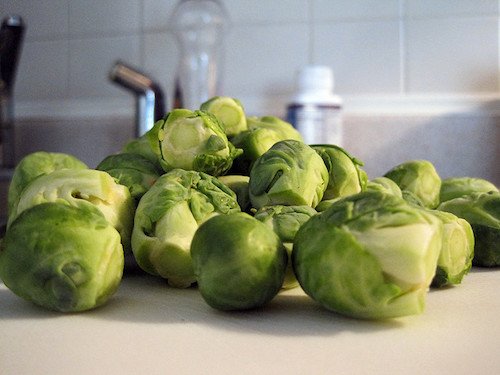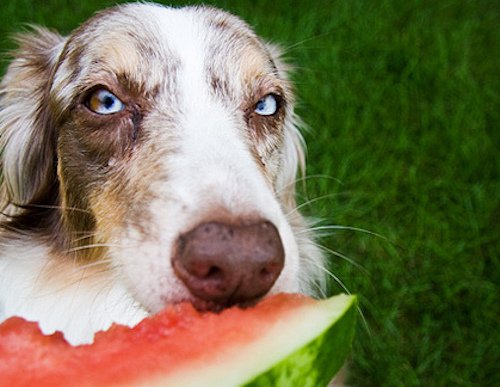'Twas getting close to Christmas, the big night was nearing our fun could be seen in the moonlight shining. Snow Angels made and snowmen and women statues washed in sparkles out my window this eve
The icicles were long and oh so pretty, it made me wonder how long they would last. Sweet paws and wags filled our house with wonder knowing Santa Paws would soon be here.
We knew the fun with stockings and furbabies would be such a joy to discover.
https://www.noradsanta.org/
Sunday, December 17, 2017
Friday, December 15, 2017
Home Remedies, tried and True , more to come.
Home Remedies 101
Although, nothing takes the place of a vet, these home remedies will work till either you can get to a vet or if you may be lacking in the money. (in between paydays is stressful) We know an ear ache in your dogs can go from mild to OMGOSH in 1 day flat.......
Coconut oil --- help everything from coat./skin/ and help clear ear infections.
When your dog is feeling under the weather, your vet should be the first person you call. Seemingly minor symptoms may be indicative of a serious underlying medical condition, in which case do-it-yourself remedies could be ineffective or cause more harm than good.
But if your dog has a minor ailment, such as dry skin or a mild upset stomach, some home remedies can be quite beneficial. Here are nine simple, vet-approved home remedies that can provide relief for your canine companion.
Vitamin E is a powerful antioxidant that helps fight aging, says Dr. Judy Morgan, a holistic veterinarian based in New Jersey. (Antioxidants prevent free radical damage, which scientists believe contributes to aging.) While your dog couldn’t care less about maintaining her youthful glow, she can still benefit from Vitamin E oil. Morgan says it adds protection against UV radiation, which is especially beneficial if your dog spends a lot of time outdoors.
It can also be used to moisturize your companion’s dry skin. Morgan recommends massaging Vitamin E oil on your dog’s coat. “Vitamin E capsules can also be broken open and used on warts, calluses, or dry spots,” she says, adding that there is no cause for concern if your pet licks off the small amount of the oil.
Flavorless electrolyte-replacing liquids (such as sports waters or pediatric drinks) not only help athletes to rehydrate and babies to recover from illness, but also can supply your sick pooch's body with much-needed fluid and electrolytes if he’s suffering through a bout of diarrhea.
“Dogs lose fluids and electrolytes when they have diarrhea, so offering them a drink that contains both can be appropriate, particularly if their appetite hasn’t fully returned to normal,” says Dr. Jennifer Coates, veterinary advisor with petMD.
Consult your veterinarian as to the appropriate dosage before giving these types of liquids to your dog and to determine whether additional treatment is necessary.
Delicious, plain yogurt can be a healthy treat for your dog. The live probiotic organisms in the yogurt may also help keep the bacteria in your dog's intestines in balance, but “the canine digestive tract is not the same as ours,” Coates cautions. “There are better options out there that are made specifically for dogs.”
Probiotic supplements for dogs are widely available through veterinarians and over-the-counter. Coates recommends ones that are made by reputable companies and that have the National Animal Supplement Council (NASC) seal on the label to ensure that you are purchasing a safe and effective product.
Chamomile soothes the stomach by decreasing muscle spasms and cramps, Morgan says. “It also decreases inflammation of mucous membranes, so it decreases inflammation of the stomach and intestinal lining.” Chamomile tea can be added to your dog’s food or water bowl, or given by mouth with a syringe, she says.
Getting your dog to drink something new is not always easy, however, admits Dr. Patty Khuly, owner of Miami, Florida-based Sunset Animal Clinic. She primarily uses chamomile on dogs with minor rashes and irritations.
Khuly recommends brewing a strong chamomile tea, pouring it into a clean spray bottle, and letting it cool in the refrigerator. “Then, spray liberally onto red or raw skin for an immediate soothing effect—with no sting.”
If you’ve had the chicken pox, you may have taken an oatmeal bath to soothe your itchy skin. “Oatmeal contains chemicals called avenanthramides and phenols, which have anti-inflammatory properties,” Morgan explains.
Pets with skin allergies and superficial infections get immediate relief from oatmeal, says Khuly, who is a general veterinary practitioner. “It’s especially helpful for dogs with really itchy feet. Plus, it’s 100 percent non-toxic and delicious, too.”
To create your own remedy, Morgan suggests grinding the oatmeal to a fine powder and mixing it with water to apply as a poultice (drying agent) on hot spots or inflamed areas. If your dog tolerates baths, you can add the oatmeal formula to warm water, and let your dog soak for five to 10 minutes.
You might use magnesium-rich Epsom salts to relieve sore muscles. They have anti-inflammatory properties and are also useful for soaking and cleaning wounds, Morgan says. “They cause abscesses to open and drain, relieving pressure in the wound and allowing healing. We use these a lot for soaking feet of horses and also dogs with inter-digital sores.”
To create a soak for your dog, Morgan advises mixing the Epsom salts with warm water and applying the soak on your dog for five to 10 minutes, three times a day.
If you are reluctant to use conventional flea prevention products, you might have looked into natural options. “There are a lot of recipes out there—some good, some bad,” Morgan says. Essential oils can be very effective, she says, “but must be diluted so they do not cause harm to the animal.” (Note: Some oils that are safe for dogs may be toxic for cats. Check the ASPCA’s Animal Poison Control for guidance and consult with your veterinarian.)
Morgan likes coconut oil, which you can either give your dog orally or apply externally on his coat. “The higher the lauric acid content in the oil, the more effective it will be,” she says. “Many inferior coconut oils have very low lauric acid content.” Coconut oil can also be used as a carrier oil for essential oils.
After using a flea comb daily to help remove fleas from a dog’s coat, Integrative Veterinarian Dr. Carol Osborne recommends bathing your canine companion with a natural pet flea shampoo. “Start, for example, with a pint of organic oatmeal shampoo, and then add two tablespoons of either neem or tea tree oil, shake well and begin bathing. Pets may be bathed weekly or as needed.” Keep in mind that improper dilutions of tea tree oil and other essential oils can be toxic for pets, so consult with your veterinarian first. And while natural options like these may help repel fleas, they are unlikely to solve a full-blown infestation on their own.
Aside from the redness, swelling, sneezing, and other symptoms a skunk encounter can create for your dog, is the offensive smell. A de-skunking remedy Khuly suggests is a mixture of hydrogen peroxide, baking soda, and dishwashing liquid, which she says works on skunked fur and everything the skunked fur has contact with. Mix four cups of hydrogen peroxide with one-third cup baking soda and a small squirt of dishwashing liquid, and apply it liberally to your pet’s coat, she says. Rinse well after about five minutes and repeat if necessary.
While it’s not the most glamorous topic, this solution also works well for stinky anal glands, Khuly says.
No, this is not the same as the licorice candy you eat. Licorice root is actually a form of cortisone, and cortisone relieves skin irritation and reduces the urge to scratch, says Osborne, who practices in Chagrin Falls, Ohio.
You may see bottles of licorice root in stores that sell health products. Pet supply stores also offer licorice products formulated for dogs. Some dog-specific products designed to treat allergy symptoms in dogs may also include licorice root.
If you’ve given your dog a flea bath and dip and she’s still itchy, Osborne suggests the following herbal, home remedy: “Take five drops of licorice root, five drops of dandelion root, and five drops of cat’s claw. Mix all three together and give five drops of the final solution to your canine by mouth, once daily for 14 days in a row.”
“Since cortisone is a type of steroid, it’s important to talk to your veterinarian before giving these products to your dog to prevent any potential cross reactions and/or side effects with any other medications your pet may be taking,” Osborne advises. Also, some licorice root formulations have been associated with low blood potassium levels, muscle breakdown, and kidney damage. Make sure you are working with a veterinarian who is well-trained in holistic medicine before you reach for any herbal remedy.
Baking soda, dishwashing liquid, hydrogen peroxide, and chamomile tea are a few items you may keep in your home that can also double as home remedies for your dog. Remember to first talk to your vet about any unusual symptoms your dog has and whether these products are appropriate for her situation. Taking away your canine companion’s discomfort may already be well within your reach.
Although, nothing takes the place of a vet, these home remedies will work till either you can get to a vet or if you may be lacking in the money. (in between paydays is stressful) We know an ear ache in your dogs can go from mild to OMGOSH in 1 day flat.......
Coconut oil --- help everything from coat./skin/ and help clear ear infections.
When your dog is feeling under the weather, your vet should be the first person you call. Seemingly minor symptoms may be indicative of a serious underlying medical condition, in which case do-it-yourself remedies could be ineffective or cause more harm than good.
But if your dog has a minor ailment, such as dry skin or a mild upset stomach, some home remedies can be quite beneficial. Here are nine simple, vet-approved home remedies that can provide relief for your canine companion.
1. Vitamin E Oil for Healthy Skin
Vitamin E is a powerful antioxidant that helps fight aging, says Dr. Judy Morgan, a holistic veterinarian based in New Jersey. (Antioxidants prevent free radical damage, which scientists believe contributes to aging.) While your dog couldn’t care less about maintaining her youthful glow, she can still benefit from Vitamin E oil. Morgan says it adds protection against UV radiation, which is especially beneficial if your dog spends a lot of time outdoors.
It can also be used to moisturize your companion’s dry skin. Morgan recommends massaging Vitamin E oil on your dog’s coat. “Vitamin E capsules can also be broken open and used on warts, calluses, or dry spots,” she says, adding that there is no cause for concern if your pet licks off the small amount of the oil.
2. Electrolyte-Replacing Liquids for Diarrhea
Flavorless electrolyte-replacing liquids (such as sports waters or pediatric drinks) not only help athletes to rehydrate and babies to recover from illness, but also can supply your sick pooch's body with much-needed fluid and electrolytes if he’s suffering through a bout of diarrhea.
“Dogs lose fluids and electrolytes when they have diarrhea, so offering them a drink that contains both can be appropriate, particularly if their appetite hasn’t fully returned to normal,” says Dr. Jennifer Coates, veterinary advisor with petMD.
Consult your veterinarian as to the appropriate dosage before giving these types of liquids to your dog and to determine whether additional treatment is necessary.
3. Yogurt for Dogs
Delicious, plain yogurt can be a healthy treat for your dog. The live probiotic organisms in the yogurt may also help keep the bacteria in your dog's intestines in balance, but “the canine digestive tract is not the same as ours,” Coates cautions. “There are better options out there that are made specifically for dogs.”
Probiotic supplements for dogs are widely available through veterinarians and over-the-counter. Coates recommends ones that are made by reputable companies and that have the National Animal Supplement Council (NASC) seal on the label to ensure that you are purchasing a safe and effective product.
4. Chamomile Tea for Upset Stomach and Minor Irritation
Chamomile soothes the stomach by decreasing muscle spasms and cramps, Morgan says. “It also decreases inflammation of mucous membranes, so it decreases inflammation of the stomach and intestinal lining.” Chamomile tea can be added to your dog’s food or water bowl, or given by mouth with a syringe, she says.
Getting your dog to drink something new is not always easy, however, admits Dr. Patty Khuly, owner of Miami, Florida-based Sunset Animal Clinic. She primarily uses chamomile on dogs with minor rashes and irritations.
Khuly recommends brewing a strong chamomile tea, pouring it into a clean spray bottle, and letting it cool in the refrigerator. “Then, spray liberally onto red or raw skin for an immediate soothing effect—with no sting.”
5. Oatmeal for Itchy Skin
If you’ve had the chicken pox, you may have taken an oatmeal bath to soothe your itchy skin. “Oatmeal contains chemicals called avenanthramides and phenols, which have anti-inflammatory properties,” Morgan explains.
Pets with skin allergies and superficial infections get immediate relief from oatmeal, says Khuly, who is a general veterinary practitioner. “It’s especially helpful for dogs with really itchy feet. Plus, it’s 100 percent non-toxic and delicious, too.”
To create your own remedy, Morgan suggests grinding the oatmeal to a fine powder and mixing it with water to apply as a poultice (drying agent) on hot spots or inflamed areas. If your dog tolerates baths, you can add the oatmeal formula to warm water, and let your dog soak for five to 10 minutes.
6. Epsom Salts for Wounds
You might use magnesium-rich Epsom salts to relieve sore muscles. They have anti-inflammatory properties and are also useful for soaking and cleaning wounds, Morgan says. “They cause abscesses to open and drain, relieving pressure in the wound and allowing healing. We use these a lot for soaking feet of horses and also dogs with inter-digital sores.”
To create a soak for your dog, Morgan advises mixing the Epsom salts with warm water and applying the soak on your dog for five to 10 minutes, three times a day.
7. Oils for Flea Prevention
If you are reluctant to use conventional flea prevention products, you might have looked into natural options. “There are a lot of recipes out there—some good, some bad,” Morgan says. Essential oils can be very effective, she says, “but must be diluted so they do not cause harm to the animal.” (Note: Some oils that are safe for dogs may be toxic for cats. Check the ASPCA’s Animal Poison Control for guidance and consult with your veterinarian.)
Morgan likes coconut oil, which you can either give your dog orally or apply externally on his coat. “The higher the lauric acid content in the oil, the more effective it will be,” she says. “Many inferior coconut oils have very low lauric acid content.” Coconut oil can also be used as a carrier oil for essential oils.
After using a flea comb daily to help remove fleas from a dog’s coat, Integrative Veterinarian Dr. Carol Osborne recommends bathing your canine companion with a natural pet flea shampoo. “Start, for example, with a pint of organic oatmeal shampoo, and then add two tablespoons of either neem or tea tree oil, shake well and begin bathing. Pets may be bathed weekly or as needed.” Keep in mind that improper dilutions of tea tree oil and other essential oils can be toxic for pets, so consult with your veterinarian first. And while natural options like these may help repel fleas, they are unlikely to solve a full-blown infestation on their own.
8. Hydrogen Peroxide, Baking Soda, and Dishwashing Liquid for Deodorizing
Aside from the redness, swelling, sneezing, and other symptoms a skunk encounter can create for your dog, is the offensive smell. A de-skunking remedy Khuly suggests is a mixture of hydrogen peroxide, baking soda, and dishwashing liquid, which she says works on skunked fur and everything the skunked fur has contact with. Mix four cups of hydrogen peroxide with one-third cup baking soda and a small squirt of dishwashing liquid, and apply it liberally to your pet’s coat, she says. Rinse well after about five minutes and repeat if necessary.
While it’s not the most glamorous topic, this solution also works well for stinky anal glands, Khuly says.
9. Licorice Root for Itchiness
No, this is not the same as the licorice candy you eat. Licorice root is actually a form of cortisone, and cortisone relieves skin irritation and reduces the urge to scratch, says Osborne, who practices in Chagrin Falls, Ohio.
You may see bottles of licorice root in stores that sell health products. Pet supply stores also offer licorice products formulated for dogs. Some dog-specific products designed to treat allergy symptoms in dogs may also include licorice root.
If you’ve given your dog a flea bath and dip and she’s still itchy, Osborne suggests the following herbal, home remedy: “Take five drops of licorice root, five drops of dandelion root, and five drops of cat’s claw. Mix all three together and give five drops of the final solution to your canine by mouth, once daily for 14 days in a row.”
“Since cortisone is a type of steroid, it’s important to talk to your veterinarian before giving these products to your dog to prevent any potential cross reactions and/or side effects with any other medications your pet may be taking,” Osborne advises. Also, some licorice root formulations have been associated with low blood potassium levels, muscle breakdown, and kidney damage. Make sure you are working with a veterinarian who is well-trained in holistic medicine before you reach for any herbal remedy.
Baking soda, dishwashing liquid, hydrogen peroxide, and chamomile tea are a few items you may keep in your home that can also double as home remedies for your dog. Remember to first talk to your vet about any unusual symptoms your dog has and whether these products are appropriate for her situation. Taking away your canine companion’s discomfort may already be well within your reach.
Thursday, December 14, 2017
This is a list of Vegetables and fun people food that is safe
Hi there!
Spunky here with the latest in nutrition for my furbling friends that may need a hand at what they can beg for! BOL...
W e love our veggies now. No we are not vegetarians although I hear through the barkvine some have turned! Wowsers what a leap off the menu they took, buts I hear they are healthy so three barks fur them.

Spunky here with the latest in nutrition for my furbling friends that may need a hand at what they can beg for! BOL...
W e love our veggies now. No we are not vegetarians although I hear through the barkvine some have turned! Wowsers what a leap off the menu they took, buts I hear they are healthy so three barks fur them.
10 Best Fruits and Vegetables for Dogs
Dogs Like Veggies, Too
If you’re on the lookout for new and fun ways to rev up your furry best friend’s diet, adding fruits & vegetables can be a really healthy way to do that. Of course, certain ones are better for your dog than others. Check out the 10 best fruits & vegetables for dogs, and consider adding them to your own dog’s meal routine.
1 of 11
We
know fruits and vegetables are packed with healthy vitamins and
minerals. We know they perform wonders for the body. But do they offer
the same benefits to our dogs?
Certain fruits and vegetables are definitely more suitable for dogs than others. (And some should absolutely be avoided—a few of those are mentioned here.) Research is mixed as to whether your dog needs veggies and fruits, but some promising studies have shown that supplementing with certain vegetables, in particular, is good for your dog. This study showed a reduced rate of cancer in Scottish terriers that ate leafy greens three times a week, for instance.
We’ve put together a list of the best, most nutritious and suitable fruits and veggies for your pet. These can help with stomach upset, freshen the breath, boost immune and heart health, and tidy up the digestive tract.
 Apples
contain antioxidants, dietary fiber, vitamin A, and vitamin C. Some
dogs will enjoy their crunchy texture (almost like a chew toy!). They
help freshen doggy breath and improve dental hygiene. With their fibrous
insides, they’re a bit like all-natural denta-bones. But be sure to
wash and slice apples before serving, and remove the core and seeds,
which contain trace amounts of cyanide. You can also add a bit of peanut
butter if your dog is reluctant to give the fruit a try at first.
Apples
contain antioxidants, dietary fiber, vitamin A, and vitamin C. Some
dogs will enjoy their crunchy texture (almost like a chew toy!). They
help freshen doggy breath and improve dental hygiene. With their fibrous
insides, they’re a bit like all-natural denta-bones. But be sure to
wash and slice apples before serving, and remove the core and seeds,
which contain trace amounts of cyanide. You can also add a bit of peanut
butter if your dog is reluctant to give the fruit a try at first.
 Brussels sprouts
are rich in fiber and antioxidants, which help reduce inflammation in
the body and improve overall blood circulation. They’re also loaded with
vitamins. Brussels sprouts are good for cleaning out the colon and
improving digestive health, but they also make dogs a bit gassy. Serve
only one to three sprouts at a time, depending on the size of your dog.
Make sure to remove the hard, nubby stem and slice each sprout in half.
Cook plain before serving.
Brussels sprouts
are rich in fiber and antioxidants, which help reduce inflammation in
the body and improve overall blood circulation. They’re also loaded with
vitamins. Brussels sprouts are good for cleaning out the colon and
improving digestive health, but they also make dogs a bit gassy. Serve
only one to three sprouts at a time, depending on the size of your dog.
Make sure to remove the hard, nubby stem and slice each sprout in half.
Cook plain before serving.
 Pumpkin
is high in fiber and does wonders for the digestive system. It’s rich
in fatty acids, which are good for the skin and fur. Pumpkin also
contains beta-carotene, antioxidants, and tons of healthy minerals. Be
sure to serve canned pumpkin (not raw, sweetened, or spiced). Add a
tablespoon to your dog’s usual meal. You can freeze excess pumpkin in
ice trays, then thaw and serve as needed.
Pumpkin
is high in fiber and does wonders for the digestive system. It’s rich
in fatty acids, which are good for the skin and fur. Pumpkin also
contains beta-carotene, antioxidants, and tons of healthy minerals. Be
sure to serve canned pumpkin (not raw, sweetened, or spiced). Add a
tablespoon to your dog’s usual meal. You can freeze excess pumpkin in
ice trays, then thaw and serve as needed.
 A watermelon
is like a giant health-bomb! It’s low in calories and packed with
nutrients, like potassium, beta carotene, and magnesium. It also
contains vitamins A, B6, and C, and helps boost immune system health. Be
sure to remove the watermelon’s seeds before sharing and don’t offer
your dog the rind, which is difficult to chew and digest.
A watermelon
is like a giant health-bomb! It’s low in calories and packed with
nutrients, like potassium, beta carotene, and magnesium. It also
contains vitamins A, B6, and C, and helps boost immune system health. Be
sure to remove the watermelon’s seeds before sharing and don’t offer
your dog the rind, which is difficult to chew and digest.
Certain fruits and vegetables are definitely more suitable for dogs than others. (And some should absolutely be avoided—a few of those are mentioned here.) Research is mixed as to whether your dog needs veggies and fruits, but some promising studies have shown that supplementing with certain vegetables, in particular, is good for your dog. This study showed a reduced rate of cancer in Scottish terriers that ate leafy greens three times a week, for instance.
We’ve put together a list of the best, most nutritious and suitable fruits and veggies for your pet. These can help with stomach upset, freshen the breath, boost immune and heart health, and tidy up the digestive tract.
Tips for Serving Fruits and Veggies to Your Dog
Serve fruits and vegetables only periodically, and in small quantities. In general, they should be a small portion of a dog’s diet.
ADVERTISEMENT
- Watch sugar content: Fruits contain a lot of sugar, so keep quantities small.
- High fiber: Fiber is a good thing, and most fruits and vegetables are also high in fiber. However, too much can lead to diarrhea or vomiting.
- Check for reactions: Always keep an eye on your dog after introducing a new ingredient into her diet.
1. Apples

Flickr / @Linh Nguyen
2. Bananas
Like apples, bananas are a great source of dietary fiber, potassium, magnesium, and vitamins B6 and C. Be sure to peel bananas before serving. You can slice and serve them as treats or mash them and add them to your dog’s food. No more than half a banana is suitable for a medium-sized dog. You can also mash a banana, squish it inside a Kong toy, and freeze it before sharing to give your dog a tasty project on a hot a summer day.3. Blueberries
Blueberries are a good source of dietary fiber, antioxidants, and vitamin C, which boost a dog’s digestive and immune systems, and help maintain healthy brain function. Share just two or three frozen or fresh blueberries periodically.4. Brussels Sprouts

Flickr / @Allison H.
5. Cantaloupe
Cantaloupe contains vitamins A and C, beta-carotene, folic acid, antioxidants, and dietary fiber. All of these good things, taken together, benefit your dog’s eyes and fur, decrease inflammation in the body, and improve digestive health. Be sure to remove the rind and seeds before sharing and offer only a few bites of cantaloupe periodically.6. Carrots
Carrots are a healthy snack for humans and dogs, and a great substitute for traditional dog treats. They’re low in calories, high in fiber, and an excellent source of vitamin A and potassium. You can share plain, cooked carrots by adding them to your dog’s usual bowl of food, or share raw carrots periodically as a snack. Make sure the carrot stick is cut into manageable chunks to prevent choking. Frozen carrots (sliced or diced) can help teething puppies soothe their gums.7. Green Beans
Green beans are an excellent source of fiber, magnesium, vitamin A, vitamin C, and vitamin K. The fiber in green beans will help your dog feel full longer without piling on unnecessary calories. Dogs will enjoy eating cooked or fresh (not canned) green beans as a snack or treat, added to wet food, or as part of a homemade meal containing other healthy ingredients8. Pumpkin

Flickr / @PIVISO
9. Spinach
This leafy green vegetable is loaded with nutritional benefits for humans and dogs. Spinach contains vitamins A, B, C, and K, as well as calcium, iron, fiber, manganese, folate, and potassium. It boosts the immune system, heart health, energy levels, and vitality. Offer your dog blandly cooked spinach (no butter, onions, garlic, salt, or pepper), and be sure to chop the leaves well before sharing. It also helps to incorporate spinach into your dog’s usual meal (rather than serving on its own) so it’s easier to chew and swallow.10. Sweet Potatoes
Sweet potatoes are high in fiber, and they contain vitamin B6, vitamin C, several beneficial minerals, and beta carotene, which is thought to help protect against cancer and heart disease. Add a teaspoon (for small dogs) to a tablespoon (for large dogs) of steamed or boiled sweet potatoes to your pet’s usual bowl of food. Make sure to avoid candied yams, which are high in sugar.11. Watermelon

Flickr / @Blue Amrich

Subscribe to:
Posts (Atom)






